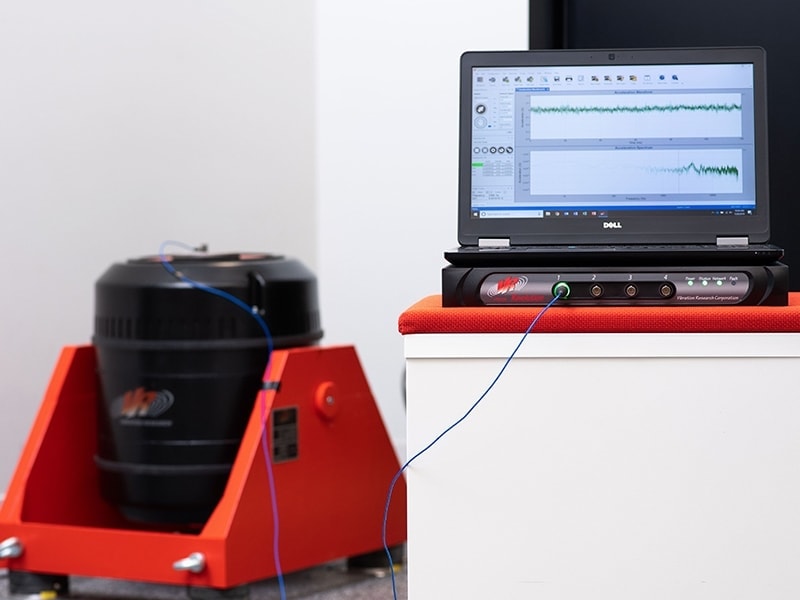
Here in the vibration testing industry, we have a few adages about keeping your equipment healthy and happy:
“Preventative shaker maintenance yearly, your company will thank you dearly.”
“A healthy shaker won’t meet its maker… for a really long time.”
Haven’t heard of them? While they may not be on the tip of your tongue yet, they are certainly true. A vibration shaker system is a huge investment and requires a certain amount of preventative maintenance. The good news is, with consistent preventative maintenance practices, your equipment should be shaking for decades.
A Journey of a Thousand Miles Begins With a Single Step
Take a baseline measurement of your new system
A good starting place for preventative maintenance (PM) is taking a baseline measurement upon delivery of your system. The easiest way to do this is with a signal generator or oscilloscope. Many controllers on the market include these functions in a single package like the VibrationVIEW System Check, which makes the process fast and easy. Your initial recording should be used as a benchmark and compared against all future recordings.
Practice Makes Perfect/Better Safe Than Sorry
Use the baseline test for subsequent recordings
You should use the test for the baseline recording each time you perform a subsequent PM recording, regardless if it is a 30Hz dwell, sine sweep, etc. In doing so, the technician is comparing apples to apples and they can easily observe any change.
There is no general rule on how often a preventative maintenance test should be run. It is up to each company to make this determination, but multiple factors should be considered, such as the operating environment, workload, and industry regulations. Companies run a preventative maintenance procedure at intervals varying from 6 months, 3 months, to every month. At a minimum, we recommend that the procedure is completed one time per year.
You may have a possible maintenance issue if a new PM recording differs from the baseline. You may encounter one of several possible scenarios, including:
-
- The test requires more voltage to run (amplifier issue?)
- A system resonance shifted (flexure fatiguing?)
- Noise is present in the sine tone (loose bolt?)
- The noise floor is increasing (loose connection?)
It’s best if these issues are caught early, as they can be addressed and repaired before they lead to bigger maintenance issues down the road.
Don’t Put Off Tomorrow What You Could Do Today
Perform regular preventative maintenance procedures
Other PM procedures you should consider performing regularly:
- Calibrating any equipment you use with the shaker system
- Disassembling the shaker and cleaning each part before re-assembly
- Checking and replacing filters
The frequency (pun intended) of performing each task will largely depend on the shaker’s operating environment, as noted above.
Even with proper PM practices, certain repairs will always be necessary. A shaker is a mechanical system and parts will fatigue, components will need to be replaced, and armatures will need to be re-wound.
Who can you call when assistance is needed above and beyond your in-house PM capabilities? Download VR’s Guide to Shaker Repair and Maintenance Companies to learn more.
